Although István Széchenyi brought the first rowing boat to Pozsony (now Bratislava, Slovakia) as early as 1826, and in 1834 (according to other sources in 1835), he established the first boathouse called Csónakda near the later Pest end of the Chain Bridge, rowing life really began to develop after the Austro-Hungarian Compromise of 1867.
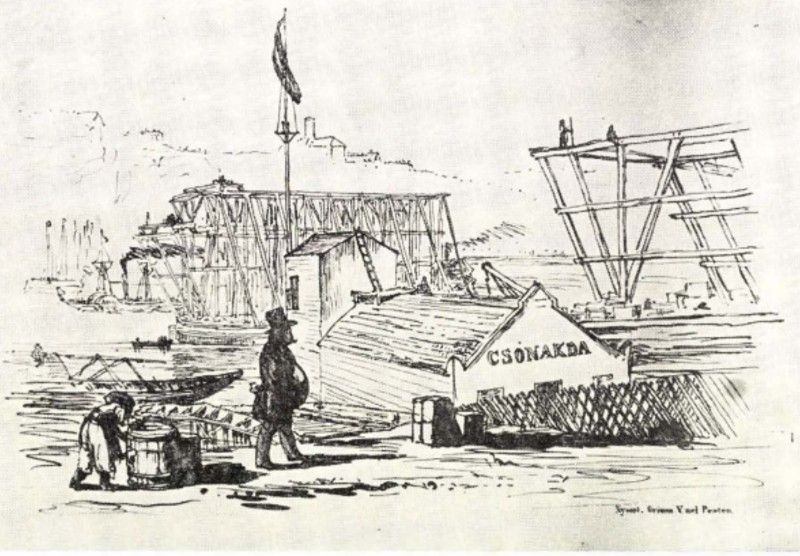
István Széchenyi built the first boathouse, Csónakda, in the 1830s for the later Pest end of the Chain Bridge. Drawing by Miklós Barabás
Rowing associations were formed one after the other, rowing, bathing in the Danube and recreation on its banks became more and more popular among the aristocracy, later the bourgeoisie, and then the poorer urban population. The Római-part provided an excellent location for this.
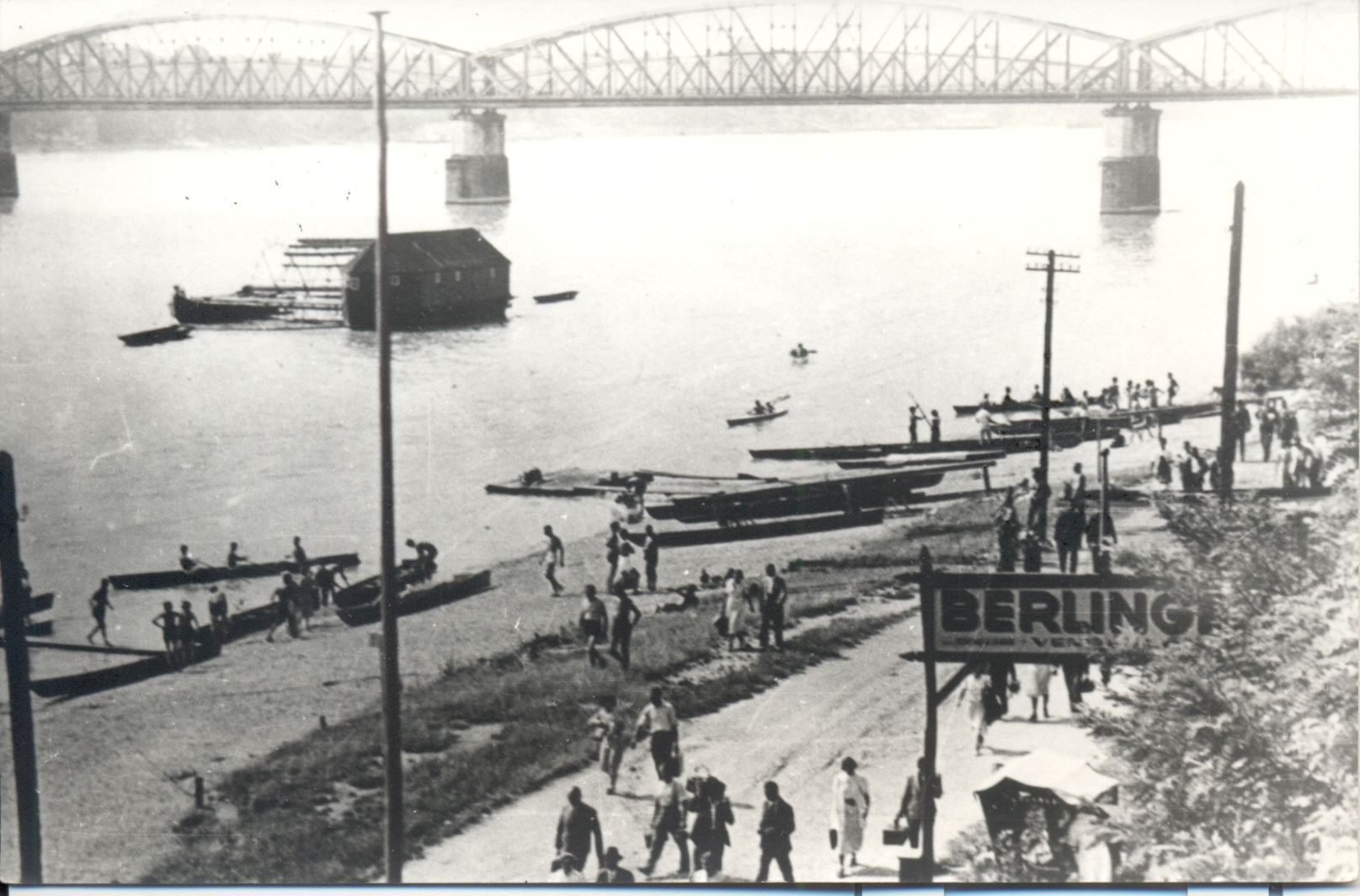
Scene of the Római-part from the 1930s. One of the watermills that previously operated here can still be seen on the Danube (Source: Hungarian Museum of Trade and Tourism)
The suburban railway, which opened in 1888 and ran between Filatorigát and Szentendre, was connected in 1895 with the circuit railway on the right side of the river. Thus, the train went from Pálffy (now Bem József) Square and made it easier for the capital's residents to reach the beach. Accessibility was also improved by the railway bridge completed in the year of the millennium (1896).
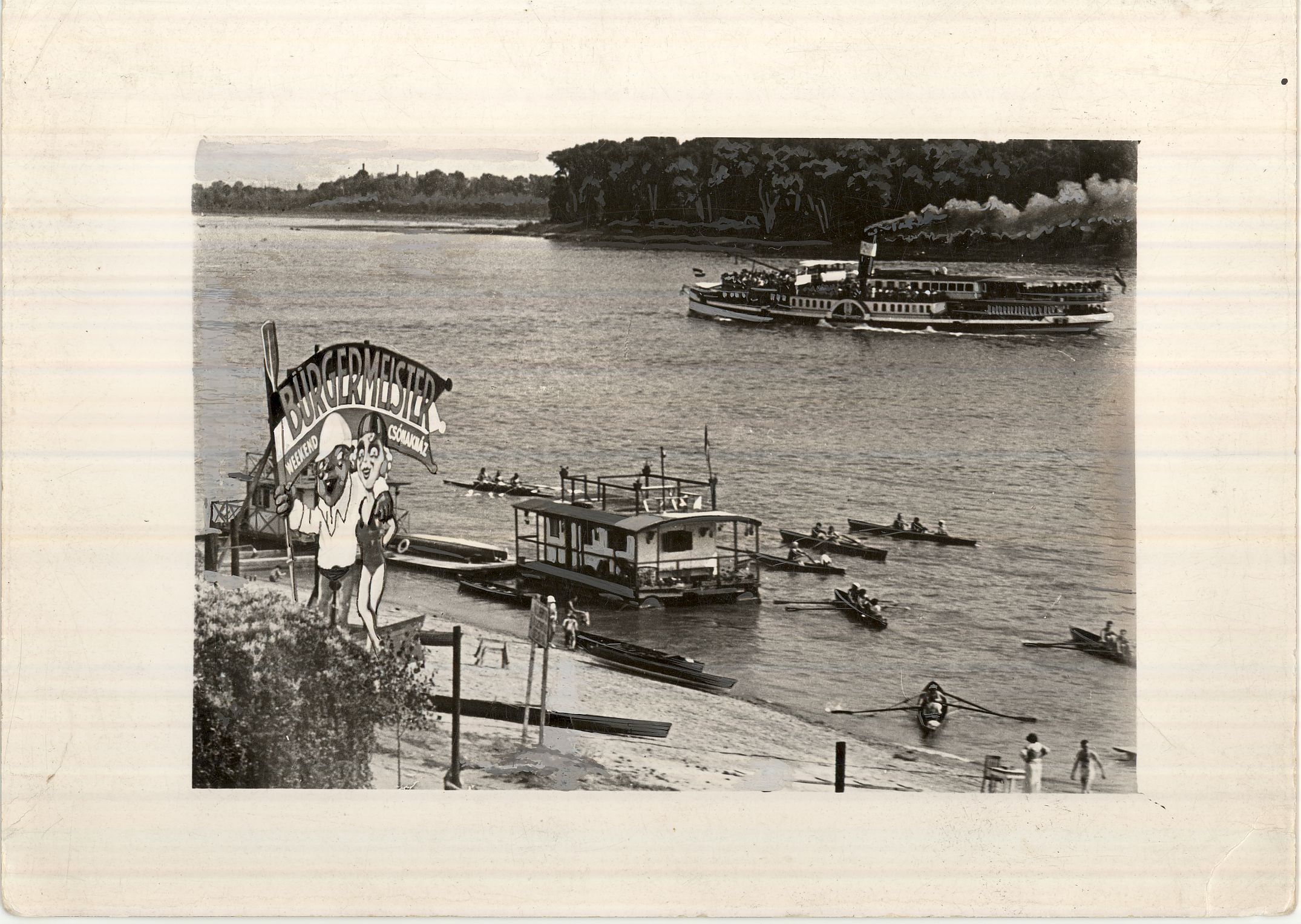
Harbor in front of the weekend site of Károly Bürgermeister, where there was a boatbuilding workshop and a boathouse, and not far away there was a restaurant (Source: Hungarian Museum of Trade and Tourism)
The first heyday of the Római-part was after World War I, and its popularity is well illustrated by the fact that in the early 1920s, there was only one boathouse with about 50 boats, and by 1925 there were already three thousand vehicles.
The boathouses were built in a row, the best known of which belonged to Mihály Magasházy, János Fojt (later Vöcsök [Grebe]), Károly Bürgermeister or Gusztáv Podoletz (later Bíbic [Peewit]). The Novara, Fodor (later Breza), Csuka (Pike) and Horgony (Anchor), among others, were built in the early 1930s. Above the port of the Hungarian River and Sea Shipping Company was the Adria, and on the border of Békásmegyer stood the Hattyú (Swan).
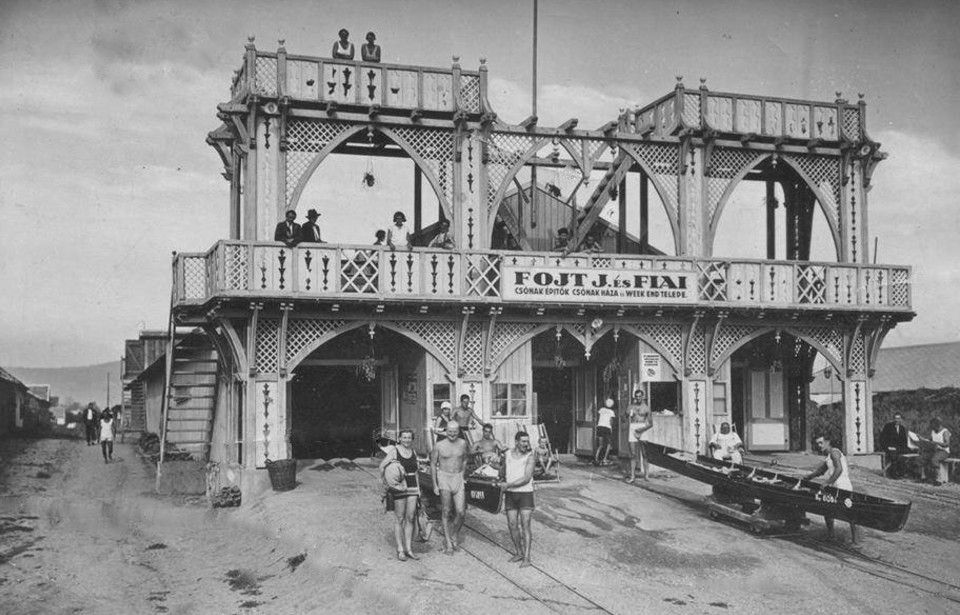 The boathouse and workshop of János Fojt and his sons were among the first to be built on the Római-part. After World War II, the terrace was removed, the facility was renamed Vöcsök, and was completely demolished in 2008 (Source: egykor.hu).
The boathouse and workshop of János Fojt and his sons were among the first to be built on the Római-part. After World War II, the terrace was removed, the facility was renamed Vöcsök, and was completely demolished in 2008 (Source: egykor.hu).
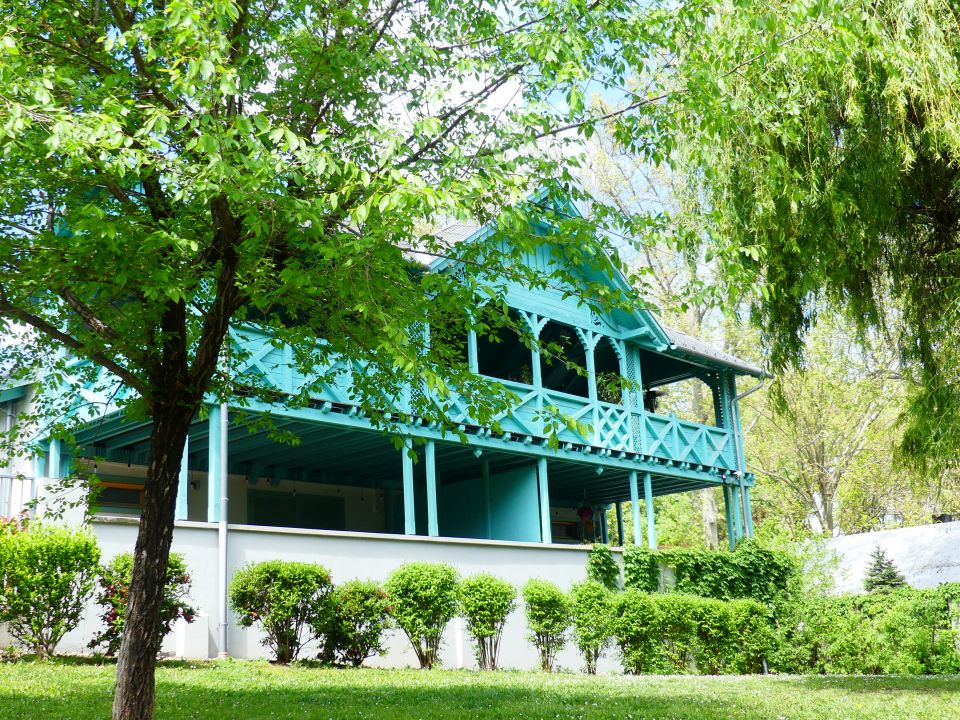
The former boathouse of Gusztáv Podoletz later operated under the name Bíbic and then Bíbic I., today it is a residential building (Photo: János Erdélyi / pestbuda.hu)
With the boom in sports, boat masters became increasingly sought after. Imre Faragó, who was known on the riverbank only as Uncle Faragó, made wooden boats in the early 1920s in his workshop in the 3rd District. He was known not only for his kayak building but also for his populous family: he had 21 children. János Fojt, Jenő Weinberger, Rudolf Jülling and Gusztáv Podoletz were also famous boat builders. (Hungarian wooden boat builders were known all over Europe, and their work greatly contributed to the fact that Hungarian kayaking and canoeing was at the forefront of the sporting world.)
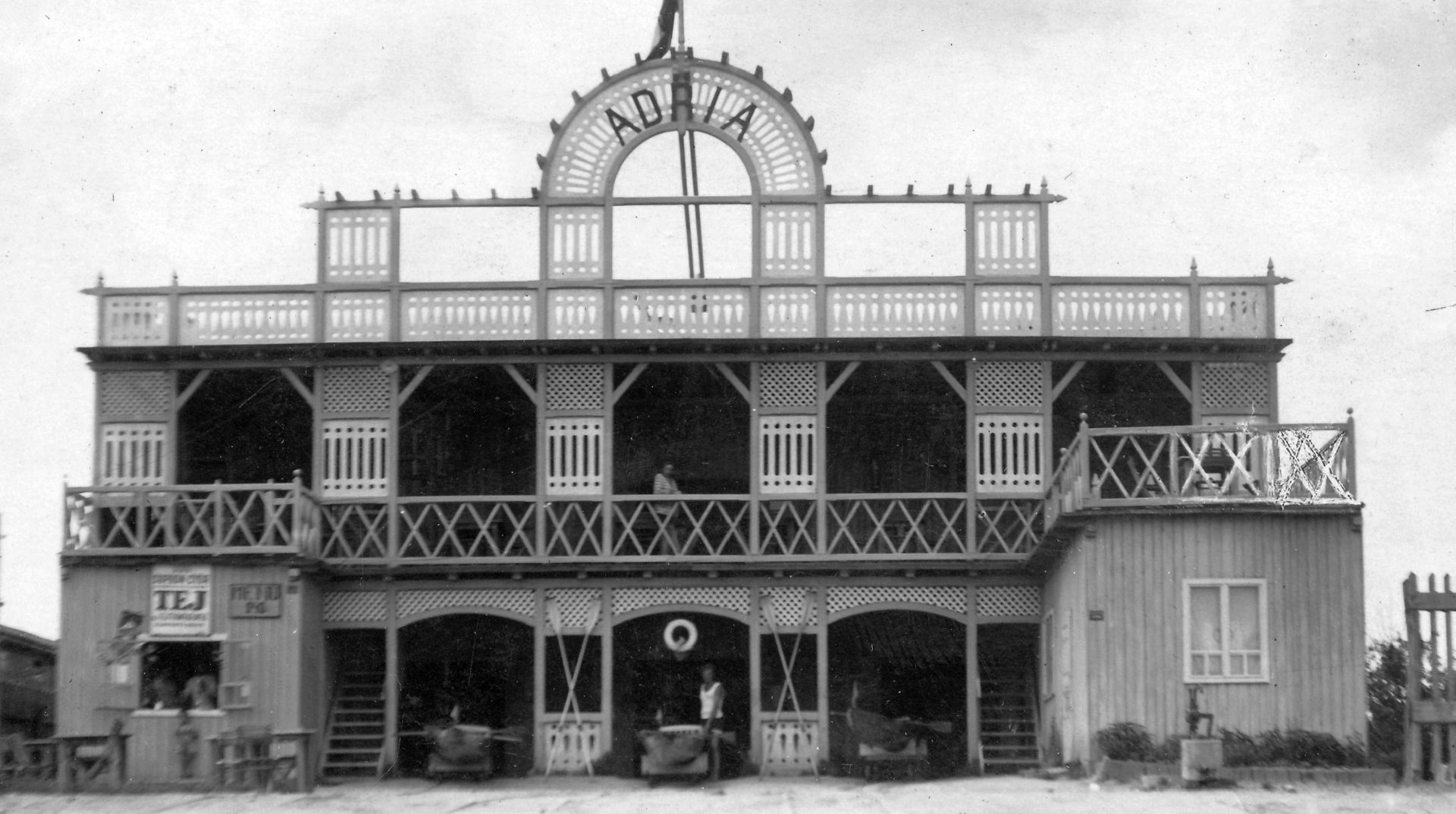
The Adria boathouse was located near the port of the Hungarian River and Sea Shipping Company, built in the 1930s (Source: Fortepan / No.: 45533)
After the water tours, on Sunday evenings, boats lit by lanterns and storm lamps rocked on the Danube, and from many boats, one could hear accordions, mandolins or guitars. Due to the increasingly lively water traffic, the boats were identified with license plates from 1925, and from 1931 there were also lifeboats on the water, among others in front of the Hungária Beach and Boat House, the boathouse of the Fodor Klub, the boathouse of Mihály Magasházy and the Boat House of the National Bank Officials. Police also provided service on motorboats.
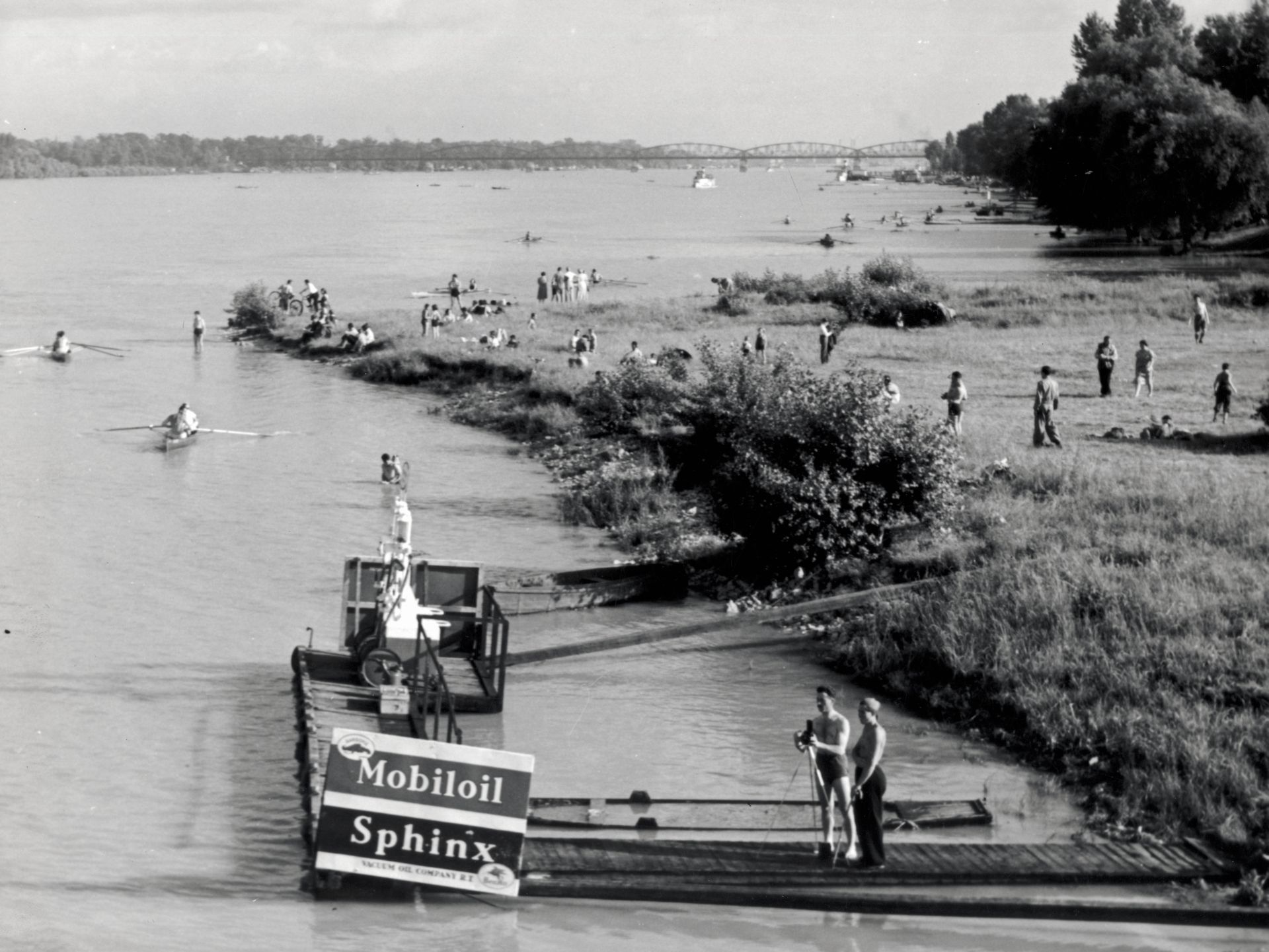
In the summer of the 1930s, fifty thousand people were already vacationing on the banks of the Danube, mainly private officials and poorer citizens of the capital. In the background of the picture is the railway bridge handed over in the year of the millennium, which was blown up in World War II (Source: Fortepan / No.: 149515)
In 1935, the 8 Órai Újság called the Római-part the "empire of the rafters" and also provided an illustrative description of it.
(...) "brown boathouses, colourful weekend buildings, old and new boathouses, modern, wide-window, multi-storey hotels made of glass and concrete, small multicoloured restaurants, confectioneries, ice cream barracks, flower beds, swaying plank piers, sand, gravel, homely rough terrain, lonely grieving stones: among them, there are the sun-tanned people of the rafters. It is a rafting country: its territory stretches from the Újpest bridge to the Buffalo, 6 kilometres long and 280 meters wide. It has a population of a few dozen in winter and fifty thousand in summer."
Also, this newspaper article writes that the Public Works Council is expelling fifty thousand people from the Danube because it wants to expropriate a 36-meter-wide section along the shore for pedestrians, ambulances and firefighters. According to the author of the article, the fact that the Public Works Council plans to create streets perpendicular from Nánási út to the Danube will lead to the extinction of the coast.
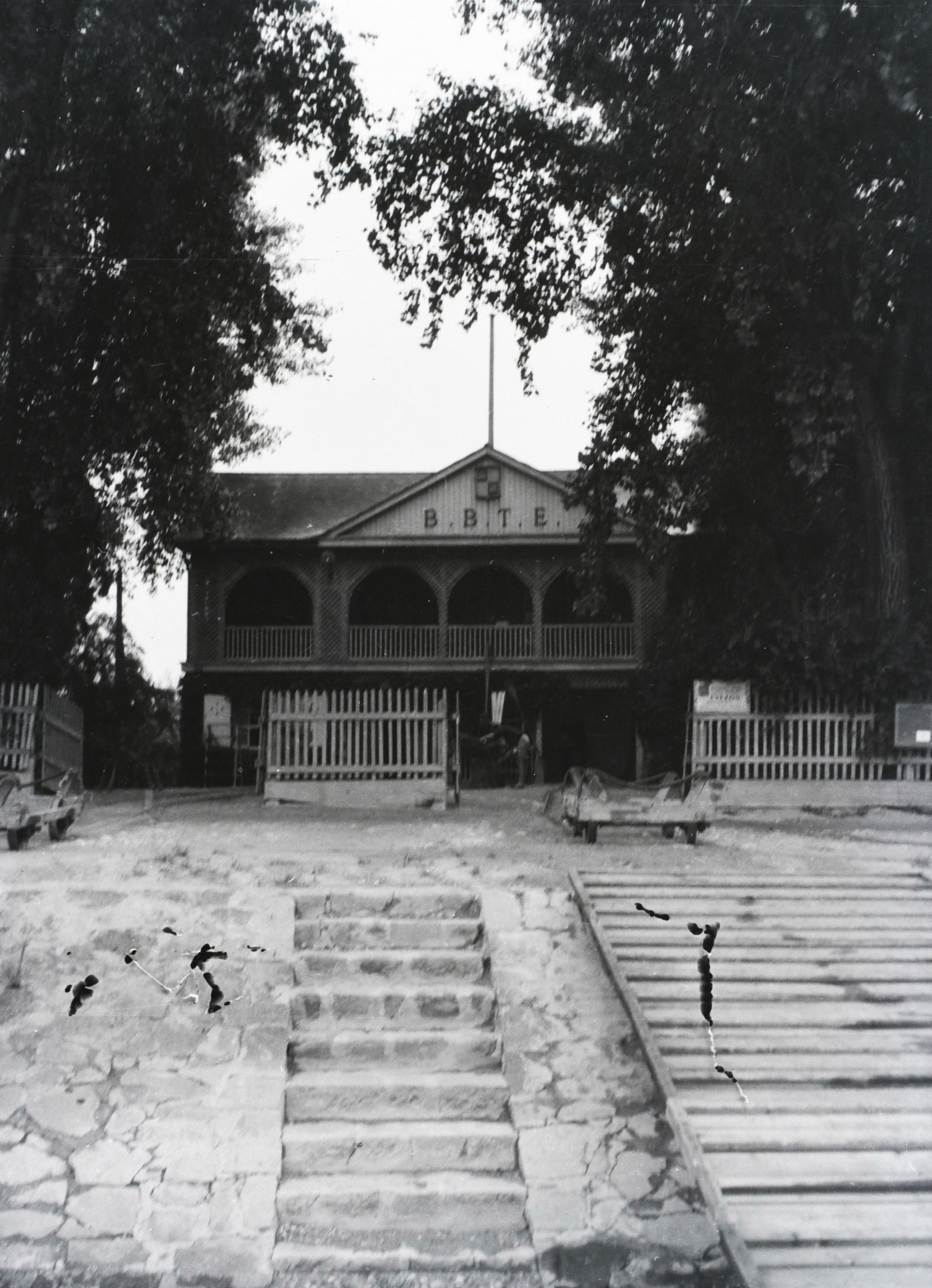
Boathouse of the Budapesti Budai Torna Egylet (Budapest Buda Gymnastics Association, BBTE) in 1941 (Source: Fortepan / No.: 128887)
In fact, World War II put an end to the lido atmosphere: the bombings destroyed many boathouses and the timber was used as fuel. In addition to the war, the floods in 1941 and 1945 caused enormous damage, when not only the coastal part but also the whole area of Csillaghegy was flooded by ice, as the wreckage of the blown-up railway bridge clogged the ice sheets.
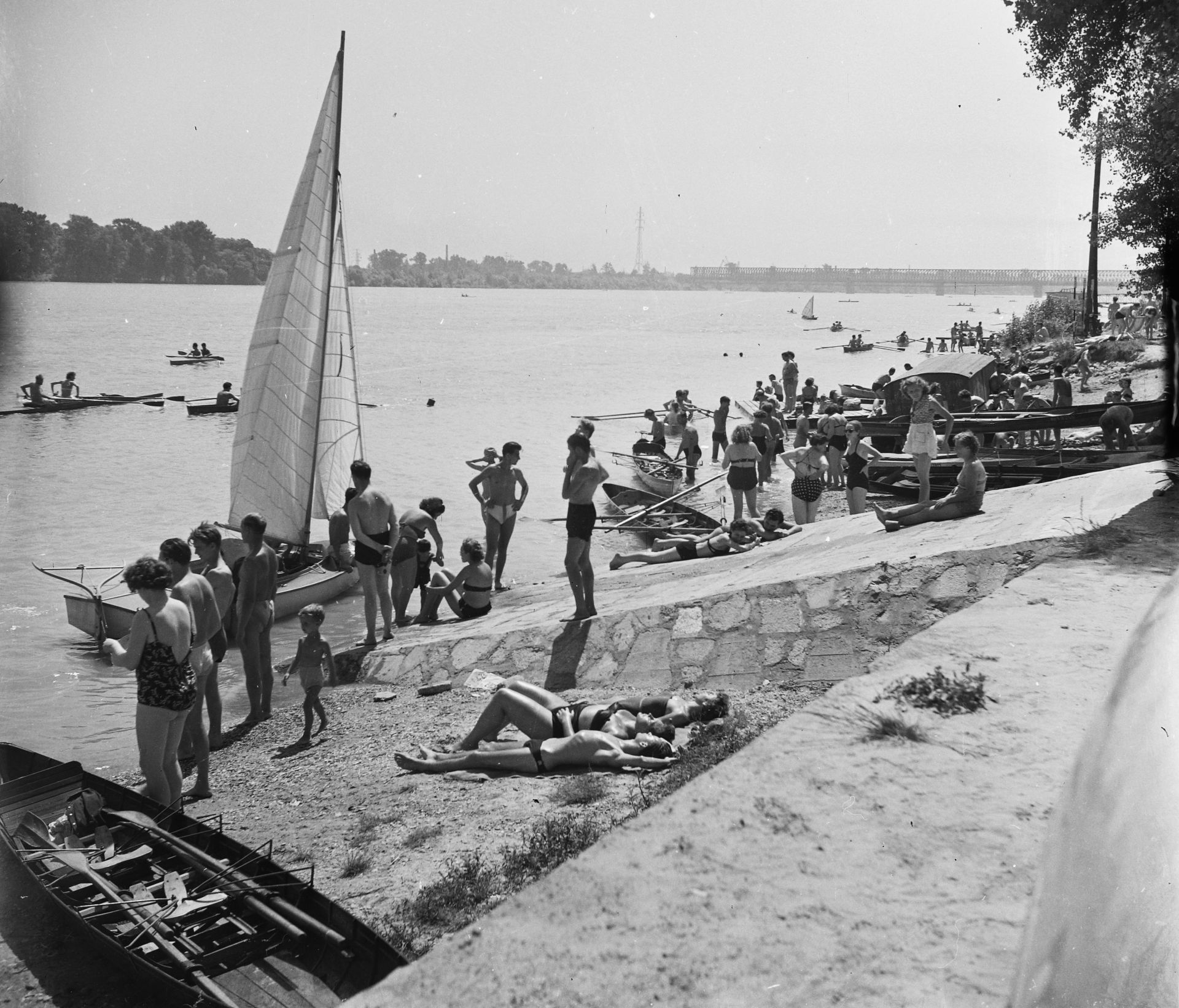
After the war, life quickly returned to the Római-part, instead of private boathouses, nationalized resorts, and garages awaited holidaymakers. The picture was taken in 1955 (Source: Fortepan / No.: 91149)
After the war, the resorts and their sports facilities were nationalized, and aluminium and plastic-covered garages were built instead of the former cosy boathouses.
 Instead of cosy boathouses, aluminium and plastic-covered ship garages were built. The Csillag boathouse nowadays (Photo: János Erdélyi / pestbuda.hu)
Instead of cosy boathouses, aluminium and plastic-covered ship garages were built. The Csillag boathouse nowadays (Photo: János Erdélyi / pestbuda.hu)
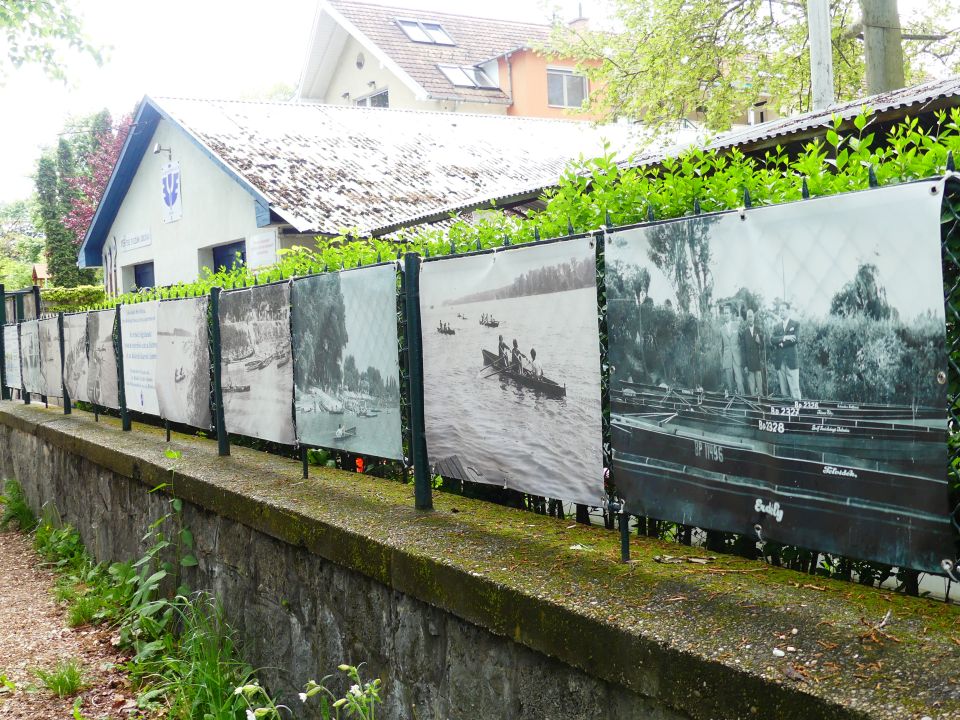
The Külker Evezős Klub (Külker Rowing Club) evokes the former lively rowing life with an outdoor exhibition (Photo: János Erdélyi / pestbuda.hu)
Due to the deterioration of the water quality, bathing on the Danube was banned in 1973, due to which the attractiveness of the riverbank decreased rapidly, and visitors went to the nearby baths. From the 1990s, sports was relegated to the background, various restaurants opened on the bank, and then the construction of gated communities began in the early 2000s.
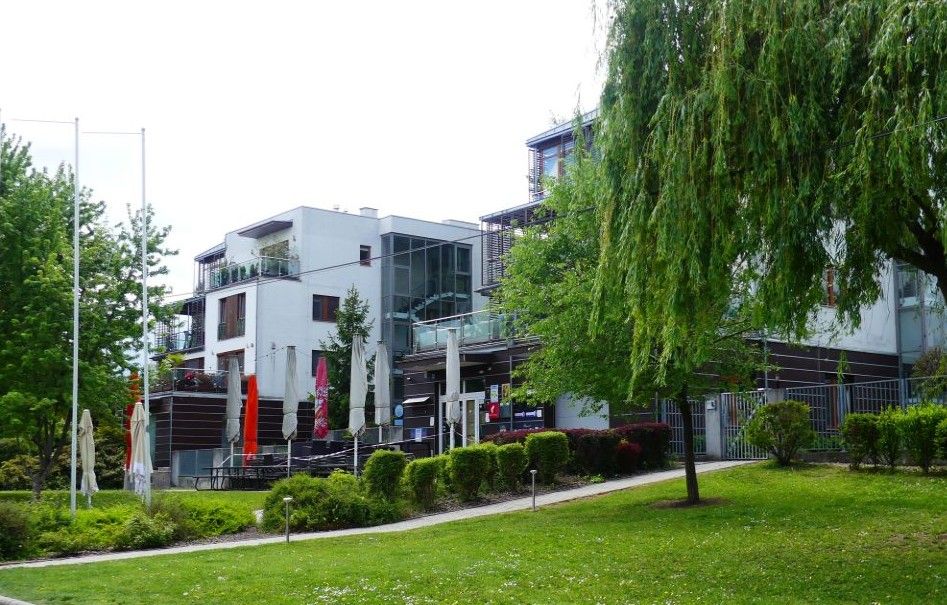 Gated community on Római-part (Photo: János Erdélyi / pestbuda.hu)
Gated community on Római-part (Photo: János Erdélyi / pestbuda.hu)
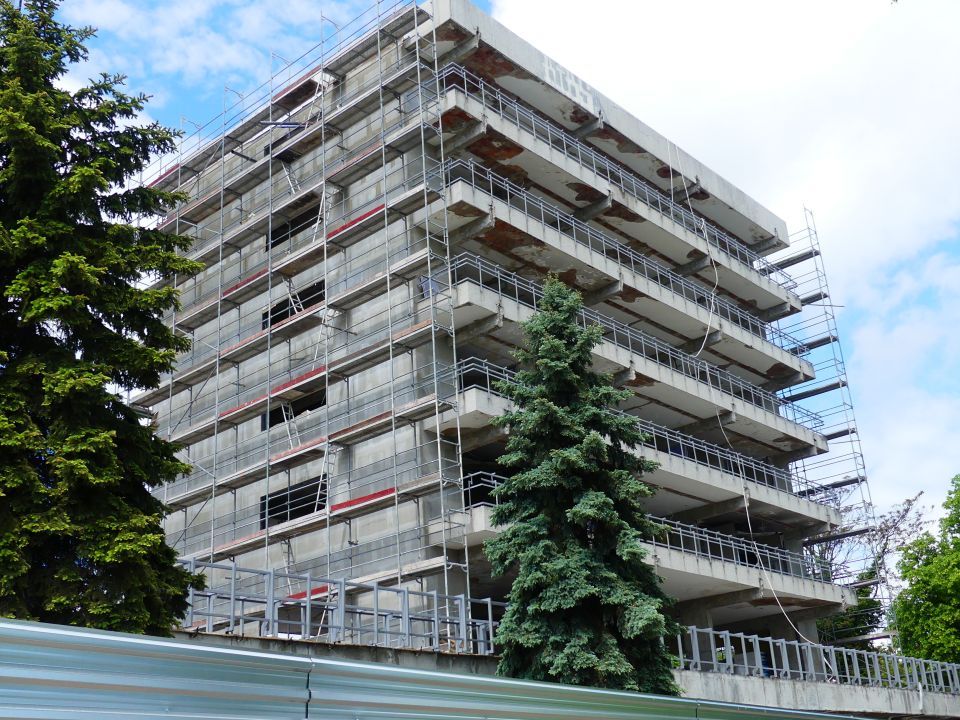
The former Postás resort was sold by Magyar Posta in 2006 and has been abandoned for years. Its boathouse has already been demolished, the building is currently being remodelled, and holiday apartments are planned. It is expected to be completed next year (Photo: János Erdélyi/pestbuda.hu)
The issue of the future of the Római-part has come up several times in recent years, and there have been a number of consultations on the subject. The creation of the development concept and the preparation of a feasibility study on the possibilities of renewing the flood protection will continue this year.
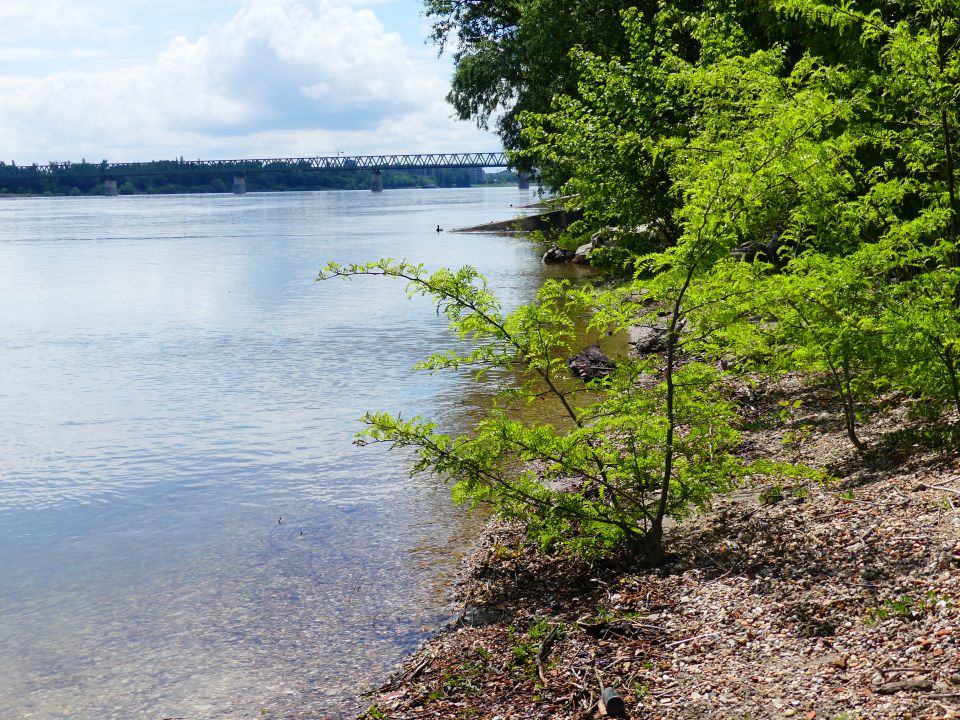
The Római-part nowadays, the railway bridge in the background (Photo: János Erdélyi / pestbuda.hu)
Cover photo: The Adria Boathouse in 1930 (Source: Fortepan / No.: 45533)

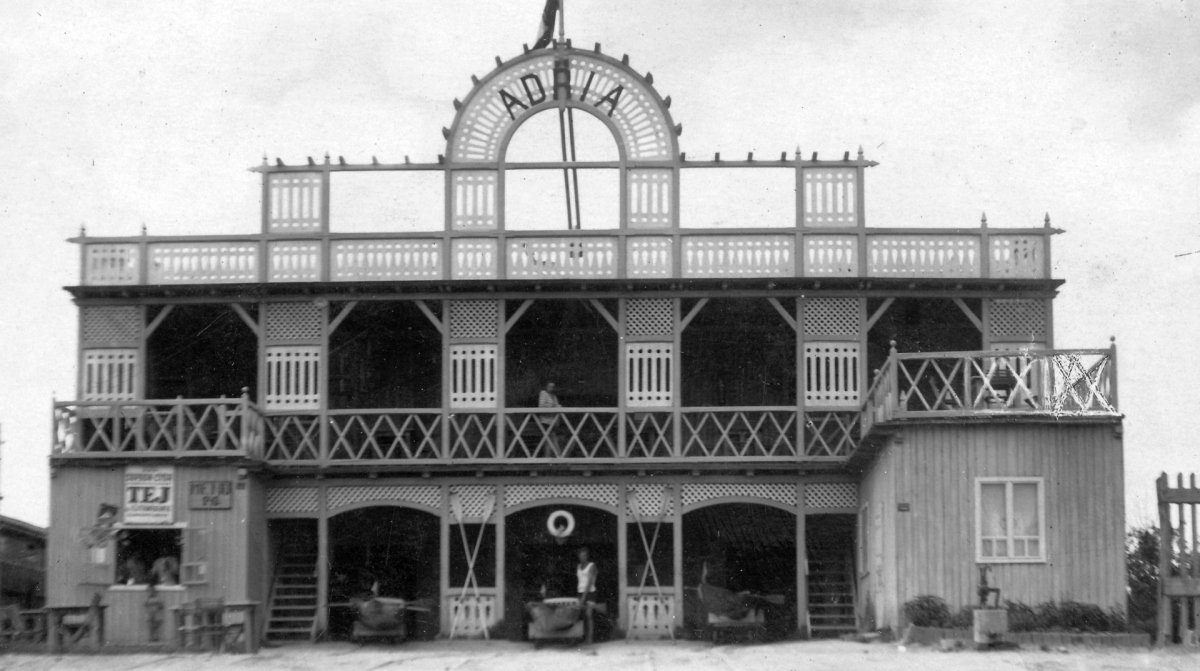



































Hozzászólások
Log in or register to comment!
Login Registration